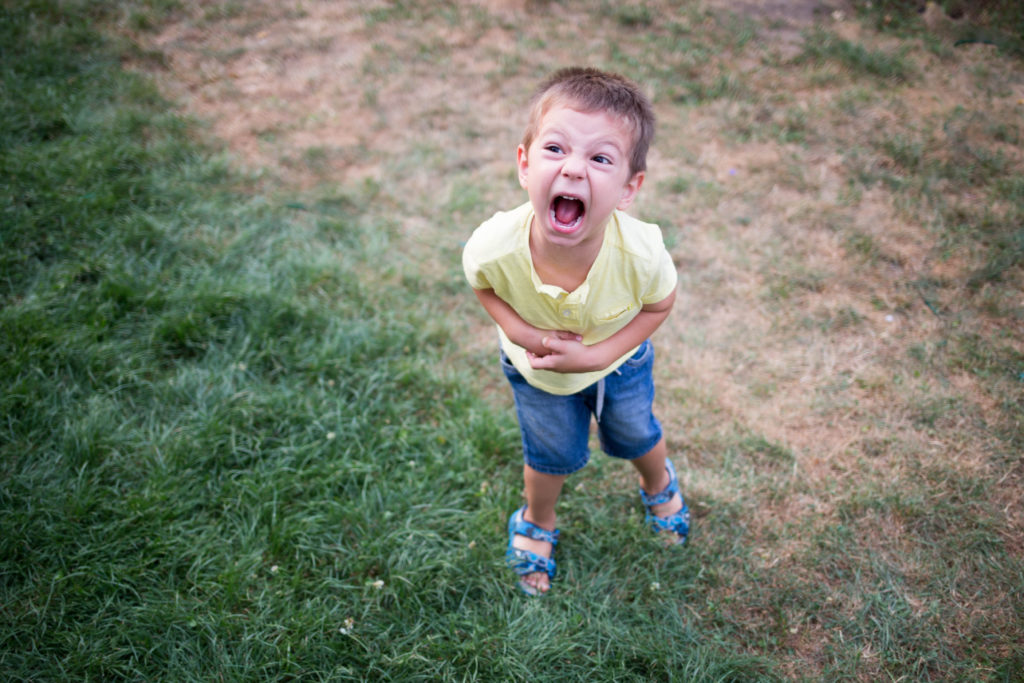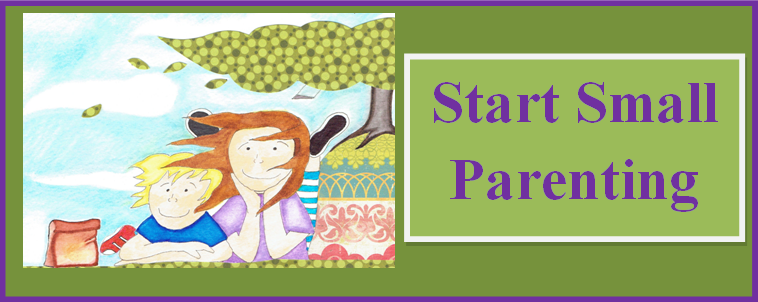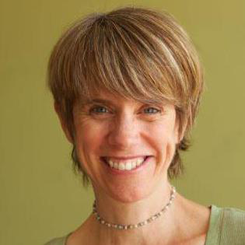Kick-kick.
“Luke, please stop kicking the back of my seat.”
“I’m not hurting anything.”
“Stop kicking my seat.”
“Stop yelling at me.” Kick-kick.
“I am not yelling. Your kicking gives me a headache.”
“You’re yelling, Dad. That gives me a headache.”
“Stop kicking, Luke, do you hear me?”
“You can’t make me.”
“You can bet I won’t be buying you that Tower-of-Power building set.”
“I don’t care.” Kick-kick.
In this example, the only way for the dad to feel a “win” is to exert authority through a threat. He may not be aware that he has come up against the child’s Baby Self, and even a strong threat does not get the desired outcome of compliance.
The Baby Self
The Baby Self is in all of us. It is most apparent at home or in a safe and known environment.
The Baby Self wants what it wants, and it wants it now. It is not rational and consequences have no meaning. It most often appears when it has to do something it doesn’t feel like doing or doesn’t get its way. It has zero tolerance for stress.
 The Baby Self would love to sit on the couch and eat chips, so being asked to rake leaves is a major stressor. A demand to stop playing with Legos and put on one’s shoes is a stressor. Baby Self responses to this stress can range from crankiness to defiance.
The Baby Self would love to sit on the couch and eat chips, so being asked to rake leaves is a major stressor. A demand to stop playing with Legos and put on one’s shoes is a stressor. Baby Self responses to this stress can range from crankiness to defiance.
In young children, the Baby Self wants as much of the parent as it can get. It thrives on attention and engagement – negative or positive – and hates to be left alone. It will not let go and ferociously provokes, paying close attention to what infuriates a parent.
“Mom. Mom.”
“Quiet, Leah, I’m on the phone.”
“But look at this picture I drew.”
“I’m on the phone.”
“You have to look at this picture.”
“Stop interrupting me.”
Loud wailing.
The 3R’s Self
In contrast, the mature, more developed 3R’s Self (Respect, Responsibility, Reliability) is what is presented to the outside world. This is the part of us that develops patience, works hard, tolerates stress, regulates emotions, and delays gratification.
Parents may receive glowing reports of their child’s behavior at school or Grandma’s house. These are places where children tap into their 3R’s Self.
After holding things together under social pressures, though, the Baby Self comes home and often lets loose. Home feels safe. And this doesn’t just happen in children. Adults do this, too, especially after a stressful day of handling life’s pressures.
There is no qualitative comparison between these two selves. One is not better than the other. We need both. In most of us, the 3R’s Self develops more completely with age, yet the Baby Self continues to also live inside us. It is in the Baby Self mode that all of us – children and adults – receive our basic, deep nurturing. It is upon this nurturing that our personality and our 3R’s Selves are built.
How to Work with the Baby Self
THE SAFETY OF HOME:
We all need a place for our Baby Selves to make an appearance. But our kids, because they are still so young, need it even more.
While it may not be pleasant for the parent, home is the best place for the child’s Baby Self to appear – often displayed through selfish and immature behavior. The child feels safe to bare even their most unlovable selves. While you don’t have to like it, understanding this Baby Self and how it works can go a long way in creating a more patient, loving environment for your child.
STAY THE COURSE:
In order for the 3R’s Self to develop, the Baby Self must not rule. When the child’s Baby Self controls outcomes, no one in the family feels safe. Parents must be willing to say “no” and stand by their decisions. Once you make a decision, as much as possible, stand firm. The child’s Baby Self will often refuse, provide an argument, or try to change the subject. Keep on track. Stay in your 3R’s Self.
GET IN, GET OUT:
When you go against the want of a Baby Self, it’s not helpful to drag out the decision. This only feeds the Baby Self. The speed with which the decision is made helps the speed at which the child will get over the disappointment. You may want to listen to your child and provide empathy, but not for very long.
PLAY THE VIOLIN:
The Baby Self will try to engage at all costs. It is a master of bringing out the parent’s Baby Self. Instead of two Baby Selves butting heads, disengage. Time to Play the Violin. Say your necessary no and step out of the discussion. Go about your business. From doing the dishes to actually playing an instrument, let the child know the expectation and continue with the flow of your own life.
MANAGING DISAPPOINTMENT
When a child feels the disappointment of a no and is left with their Baby Self at full throttle, they have an opportunity to struggle with that inside of themselves. Endless Baby Self craving can rarely be satisfied. The parent can’t fix that. This is work children must do themselves. We can aid them by giving them opportunities to practice. We must be willing to witness their unhappiness without trying to fix it Over time, this helps them build a stronger 3R’s Self.
SAY IT LATER:
When tempers have calmed, this is the time to revisit the situation and let your child know your expectations.
“Maya, you cannot hit me.”
“I didn’t like the way you threw your truck at the wall.”
“I asked you not to take a second cookie, and you did.”
Parents’ expectations are important to children. The parents’ displeasure and their words have impact. As the child matures, this will affect her choices.
WAIT
As children get older, they are big enough to create a significant struggle. Instead of verbally or physically battling, try the strategy of waiting. State your request, repeat if necessary, and then stay there and wait. There is no anger, imposed guilt, or argument. Just you – waiting. The child may be annoyed or state his irritation, but he will most often yield to your Mature self.
If parents can resist responding to their child’s Baby Self, realizing it is a part of the child’s development and nothing more, it is likely that challenging Baby Self behavior will run its course.

